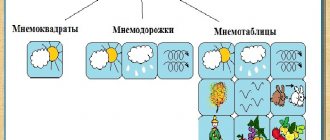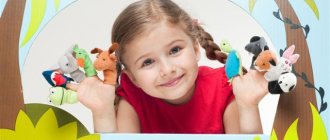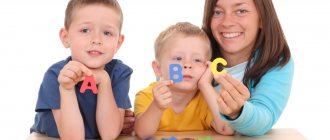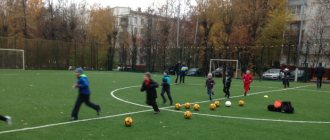The formation and active development of the level of coherent speech for preschoolers requires not only the increased attention of both parents, but also specialized classes that can be conducted in a playful or theatrical form, which is especially attractive to children. In the process of working with children, speech therapists and teachers use many modern techniques, among which mnemonics stands out, aimed at actively developing the level of coherent speech and memory in preschool children.
What is mnemonics
Mnemonics for increasing the level of speech development is a set of techniques aimed at improving perception with memorization of various information using sound samples and visual illustrations.
Provided that classes are carried out systematically, mnemonics for speech development allow you to:
- improve the memorization of heard texts in the form of stories, fairy tales, etc.;
- transform visually acquired data into abstract (and vice versa);
- create logical chains of events;
- Expand words knowledge;
- stimulate the development of imagination and thinking;
- develop children’s ability to compose complex sentences of a descriptive type, which include many words.
Mnemonics, as one of the most effective methods of memorization, is actively used not only by speech therapists, but also by teachers in kindergartens and other preschool institutions.
There are no age restrictions for classes, but many specialized experts recognize the age of 4-5 years as the most optimal, when children already have a fairly rich and varied stock of words and phrases that they can actively use.
The main tool that is used in mnemonics for developing the level of coherent speech in preschool children are mnemonic tables - specific diagrams in which certain information data is embedded.
Mnemonic diagrams for the little ones should be painted in bright shades so that the image that a frog is green, a chicken is yellow, etc. is imprinted in their minds.
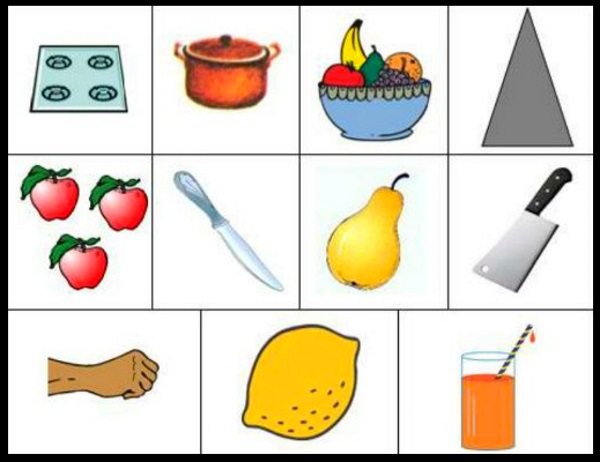
For older children, it is preferable to use single-color schemes that do not distract attention, distracting them with additional, and often unnecessary, details.
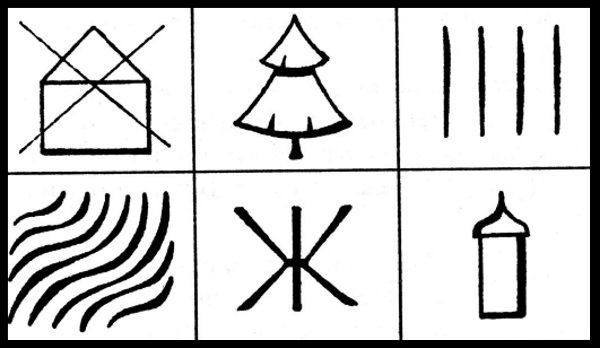
Areas of use of mnemonic tables
Mnemonic tables for the formation and development of coherent speech (developmental and educational) are images of textual information that is previously divided into groups of words in sequential order. There is one illustration for each group of words. Thanks to such a schematic sketch of information, the baby easily perceives it, remembering everything without much effort.
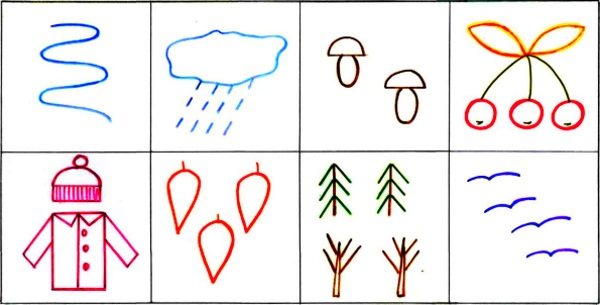
Using mnemonic tables for speech development, the following is carried out:
- Memorizing fairy tales or rhymes. Young children take part with great interest in educational games based on fairy tales they know. At home, you can invite your child to tell a story to his favorite toy, using a series of pictures. You can also draw a mnemonic table together, depicting the heroes of events with your own invented symbols, for example, a triangle is a person, a wavy line is a cloud in the sky. Thus, not only the formation of coherent speech occurs, but also the active development of imagination and fantasy with the manifestation of the hidden creative abilities of children.

- Learning general rules, such as how to brush your teeth correctly. The diagrams depict the sequence of all manipulations that are easily perceived and remembered.
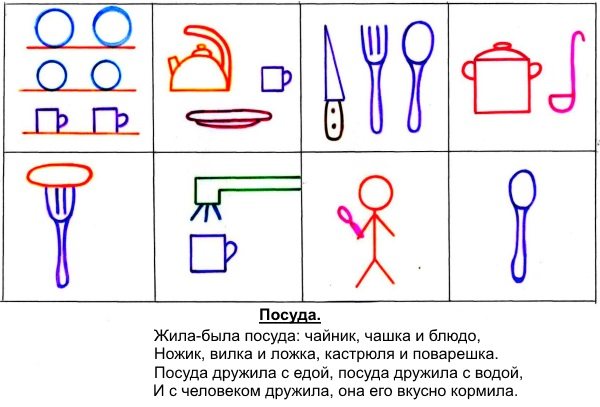
- Compiling stories describing objects, events, pets, etc. Focusing on pictures that answer basic questions: who is it, what color is it, what sounds does it make, what does it like to eat, etc., children can create a consistent description.

- Working on a retelling. After reading the text, the most difficult words are highlighted, the meaning of which must be explained to the child. After the explanations, a conversation should be held on the entire content of the text with a demonstration of drawings from the mnemonic table. A joint retelling using pictures will allow the child to quickly remember information and tell the story he heard himself.
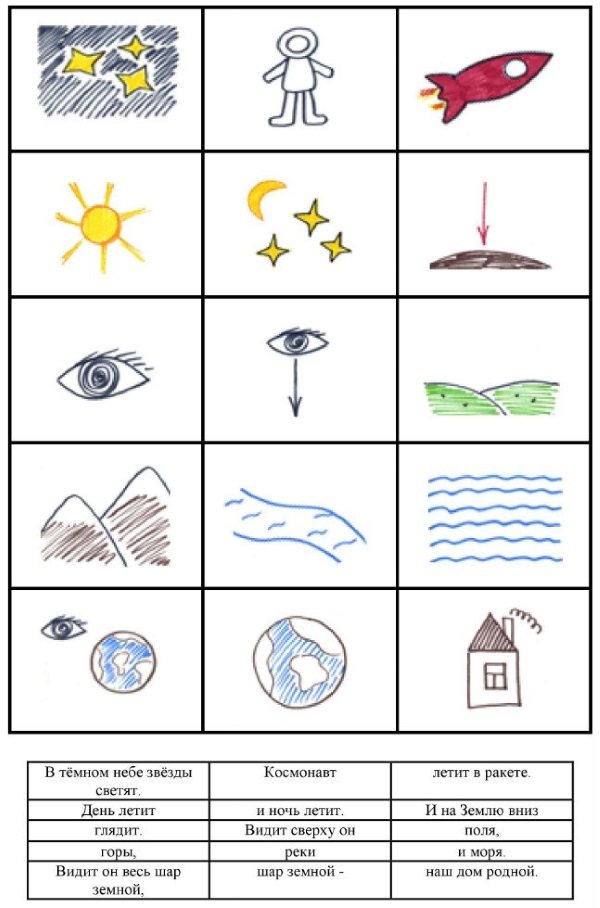
- Solving riddles. With the help of mnemonic tables, children learn to identify an exact object, focusing on its characteristics. At the first stage, it is necessary to explain to the child everything that is depicted in each picture, and only after that offer to independently guess the encrypted object.
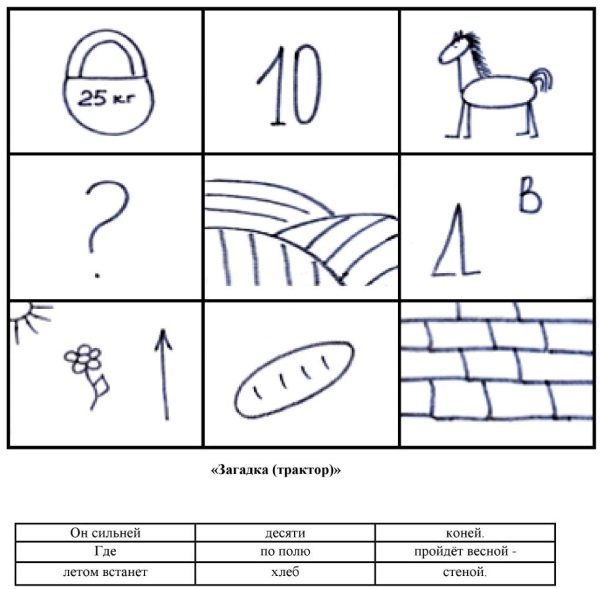
Speech therapy classes on the development of coherent speech using a variety of mnemonic diagrams involve memorizing and deciphering the plot illustrations given in the table. The type and thematic content of mnemonic tables can be different; execution can be printed (Doman cards) or made by hand. Cards for speech development in the first lessons should be small with light storylines; it is recommended to place 3-4 of them in one row, in this position they are easier to perceive.
Table of contentsLuponos Zoya Nikolaevna, teacher – speech therapist, MDOU kindergarten No. 1 “Alyonushka”
There is no area in human activity where speech is not used. It is needed everywhere. And especially at the learning stage. The success of his education depends on the quality of a child’s speech, so the main task of parents, educators and speech therapists is speech development. Pure, correct speech is one of the most important conditions for normal human mental development. With the help of speech and communication, the child easily and imperceptibly enters the world around him, learns a lot of new and interesting things, and can express his thoughts, desires, and demands. Unfortunately, these days children are becoming more and more speech impaired, which severely limit their communication with people around them. Inadequate speech development also affects the formation of non-speech mental processes: insufficient stability of attention is observed, verbal memory is reduced, and memorization productivity suffers. Corrective action should be based on the maximum use of the child’s capabilities. When teaching coherent speech, I use mnemonic techniques in my work. Mnemonics, or mnemo technique a system of various techniques that facilitate memorization and increase memory capacity by forming additional associations. Since preschoolers’ memory is involuntary: they remember facts, objects, and phenomena better, my teaching material is mnemonic tables—diagrams that contain certain information. Mastering the techniques of working with mnemonic tables significantly reduces training time and at the same time solves problems aimed at:
- development of basic mental processes - memory, attention, imaginative thinking;
- development of fine motor skills of the hands with partial or complete graphic reproduction of the text.
Using supporting drawings to teach memorizing poems captivates children and turns the activity into a game. The visual image that the child retains after listening, accompanied by viewing the drawings, allows him to remember the text much faster. To learn each poem, I develop and compile my own mnemonic table. First, I select supporting elements and fragments of the picture for the selected poem (preferably for each line), scan and, using a computer, process individual fragments to create a picture. And so, step by step, a mnemonic table is created. During the period of my work as a teacher-speech therapist, I created a series of mnemonic tables on poems on various topics: “Bread”, “Spring has come”, “Snow Woman”, “In the Forest”, “Defenders”, “My Mother” and many others. The next stage of working with the mnemonic table is an emotional, expressive reproduction of the text of the poem. Then I conduct vocabulary work on the work, a conversation on the meaning of what was read, and provide the opportunity for children to reproduce the text based on the drawings. The table-drawing hangs in a prominent place in the speech therapist’s office. Summary of a lesson on speech development in the preparatory group.
Topic: Life of wild animals in winter.
Correctional and educational goals: Consolidating ideas about wild animals, their appearance, lifestyle in winter, habits. Clarification, expansion and activation of the dictionary on the topic “Wild Animals” {animal, beast, bear, wolf, fox, squirrel, hedgehog, fur, skin, paw, den, hole; wild, predatory,). Teaching children to memorize a poem based on visual images (mnemonics). Improving the grammatical structure of speech (the use of nouns with the suffixes -onok-, -enok-, -am-, -yat. Corrective and developmental goals. Development of coherent speech, speech hearing, sense of rhyme, visual perception and attention, articulation, fine and gross motor skills , coordination of speech with movement. General speech skills, sound pronunciation, clarity of diction, intonation expressiveness. Correctional and educational goals. Formation of skills of cooperation, mutual understanding, goodwill, independence, initiative, responsibility. Fostering a love of reading fiction, poetry; respect for nature . Equipment. Computer, dry pool (beans), animal figures, plumes for breathing exercises, mnemonic table for the poem “Bear in the Forest”, pyramid of games, P. I. Tchaikovsky’s work “Seasons. Winter” (recorded). Preliminary work Learning the finger massage “Bear.” Reading M. Rapov’s fairy tale “The Hedgehog and the Squirrel”, V. Bianchi’s stories “Preparing for Winter”, “Adapted”.
LESSON PLAN
- Organizing time. Announcing the topic of the lesson. Creating an emotionally positive background.
- Development of fine motor skills, tactile sensitivity. Working in a dry pool (beans or peas) Search for planar figures.
- Writing a descriptive story. Description according to the diagram of the appearance and characteristics of wild animals (found in a dry pool).
Ask 3-4 children.
- Expressive reading of L. Kvitko’s poem “Bear in the Forest”
- Vocabulary work. Work on phrases and words: “Cold on the nose”, “The forest is almost completely stripped”, “The wind blows and sows”, “The evening has fallen”.
- Conversation on content.
- Repeated reading of the poem with the intention of memorizing.
- Independent reading of a poem by children (1-2 children).
- Physical exercise. Breathing exercises.
- Reading the poem to the other children. (Analysis and evaluation of the narration of the poem - after each reading by the child).
- The game is a labyrinth: “Help the bear get to the den”, “What animals are hiding?”
- Summary of the lesson.
Progress of the lesson
1. Organizational moment. The speech therapist organizes a greeting with the children, invites them to the office beans on the floor. It contains flat images of wild animals. Speech therapist. Go to the dry pool and put your hands in it and find one object at a time. Children complete the task. Speech therapist . What did you find? Children. We found figures of a squirrel, a bear, a fox, and a wolf. Speech therapist. Who are they? Children. These are wild animals. Speech therapist. Why are they called that? Children. They live in the forest, build their own housing and get food. Speech therapist. In today's lesson we will talk about wild animals, their life in winter, and I will also tell you a story that happened to one of the animals. 2. Main part Speech therapist. Guys, now you will write a story - descriptions of those animals whose figurines were taken out of the pool. First, you will say the name of your animal and then follow the scheme for describing the animal (Appendix 3). 1st child . A squirrel lives in a hollow tree. She has a long fluffy tail and tufted ears. By winter, the squirrel stores nuts, cones, and mushrooms. The squirrel does not scream, but clicks “tsk-tsk-tsk.” Her cub is a baby squirrel. 2nd child : The wolf is a predatory animal, lives in a den that it suits. Outwardly he looks like a dog, his fur is gray; he runs fast. Wolves hunt deer and large animals only in packs, and individually hunt small animals. A wolf cub is a wolf cub, baby wolf cubs look like puppies. 3rd child : The fox is a predatory animal, taller than a cat, but smaller than a dog, lives in a hole; There are claws on the paws, a long fluffy tail - the beauty and pride of the fox. Its body is covered with fluffy, brown or red fur. She has a very good instinct: she finds small animals by their tracks - a mouse, a hedgehog, a hare. 4th child: This is a bear, a wild animal. He lives in the forest and sleeps in a den in winter. It's big and brown. He has thick fur, a huge head, strong paws, and a small tail. His cubs are cubs. The bear can growl in a rough voice. The bear loves honey and raspberries, eats roots, and destroys anthills. The speech therapist praises each child for writing a story.
3. Reading the poem by L. Kvitko: “Bear in the Forest” Speech therapist: Guys, now, I’ll tell you a story that happened to a bear at the very beginning of winter, when he was preparing for hibernation. This is a poem , and it was written by the poet L. Kvitko. (Children sit on chairs, and the speech therapist demonstrates a presentation on L. Kvitko’s poem “Bear in the Forest.” The slide show is accompanied by an expressive, emotional reading of the poem by heart).
L. Kvitko “Bear in the Forest”
A bear walks through the forest, A bear wanders through the forest - Cold, cold on the nose - It’s very cold in the forest! The forest is almost completely stripped: There is no nest, no bird. Only the wind moans and groans, driving leaves along the paths, here and there. The bear stood on tiptoe, the bear stretched out its paws: “Wind, wind, don’t whistle!” A cloud of snow is coming! Powder all the trees, Powder all the bushes! The wind blows, blows, blows. It sows and sows with warm snow, Pooh and fluff - White all around. It immediately became quiet. The snow lies like a blanket. Evening fell to the ground... And where did the bear go? The worries are over - Sleeping in his den
4. Conversation based on content. Vocabulary work
Speech therapist. Children. Did you like the story about the bear?
Children. Yes.
Speech therapist. Tell me, guys, how do you understand “Cold on the nose”?
Children. – My mother says: the report is coming.
Speech therapist. That's right guys, this means it will soon be cold. What does it mean, “The forest is almost completely “stripped”?
Children. – Leaves are the clothes of the trees, and the wind blows the leaves and, as it were, “undresses” the trees.
Speech therapist. Right. Children, tell me, who was the bear talking to?
Children. - With the wind.
Speech therapist. What did the bear ask the wind?
Children. “No matter what he whistled, he covered everything with snow.”
Speech therapist. How did he ask?
Children. The bear stood on tiptoe, the bear stretched out its paws...
Speech therapist. Let's ask the bear for the wind: ( Choral repetition of the bear's request)
Children. - Wind, wind, don’t whistle! A cloud of snow is coming! Powder all the trees, Powder all the bushes!
Speech therapist. Guys, do you think the wind fulfilled the bear’s request?
Children. Having completed this, he began to slowly winnow and sow snow, and poured snow on it as a “blanket.”
Speech therapist. Well done, the wind fulfilled the bear’s request. Tell me, children, what does it mean that the snow lies like a “blanket”?
Children. It’s warm under the snow - and the ants and mice and roots don’t freeze.
Speech therapist: Well done! Sasha, you understand correctly. And who can say how evening fell to the ground?
Children . In winter, the days are short, the sun sets and it gets dark quickly. So they say that evening has fallen - it quickly got dark.
Speech therapist. Right! Guys, listen to this poem again.
5. Repeated telling of the poem with the intention of memorizing the poem. (Set up a mnemonic table) The speech therapist reads poems emotionally, expressively correlating each part with the picture of the mnemonic table, showing the sequence with a pointer.
6. Physical exercise. Children imitate:
- bear gait,
- standing while asking:
- the bear stood on tiptoe, - the bear stretched out its paws.
- Sleeps in a den.
7. Breathing exercises. To the music of P.I. Tchaikovsky "Seasons. Winter" children perform gymnastics exercises:
- Wind: - whistles,
- Storm
- It blows
- groans
8. Repeated telling of the poem with the intention of memorizing the poem. Speech therapist. Children, I will read the poem again. Try to remember the intonation, the pitch of the voice with which I pronounce the words of the poem in each picture. (The poem is read by a speech therapist based on the pictures of the mnemonic table).
9. Reading a poem by children. Children recite a poem based on mnemonic table pictures, a speech therapist helps children with different levels of speech development using techniques: prompting the first words of a line, difficult words, conjugate speech techniques, and more. 10. Analysis of children's reading of the poem. After each reading of a poem by children, an analysis of the story follows, involving children with a good memory.
11. Game. Guys, the bear left his supplies for you and me, but to get to them you need to complete tasks: first, find all the animals that are hidden in the picture (children are offered riddle pictures “What animals are hidden here?”) Appendix 4 . Second task: Game - labyrinth “Help the bear get to the den.” Appendix 3.
12.Result of the lesson. Speech therapist: Guys, what new did we learn in class? Children: - A story about a bear that happened to him at the beginning of winter. — we helped the bear get to the den and completed the correct drawing of the letters that we know. — found hidden animals in the picture and described them according to the diagram. — learned a new poem. Speech therapist: Well done guys, we managed to do and learn a lot today in our lesson. And most importantly, we learned L. Kvitko’s poem “The Bear in the Forest”; was it difficult to memorize it? Children: No. With tables we learn poetry quickly.
Annex 1

Appendix 2 Scheme for describing animals .

- What is it called? 2. Is this a wild or domestic animal? 3. Where does it live? What is the name of his home? 4. What size is it? 5. What color is it? 6. What is his body covered with? 7. What body parts does he have (their features)? 8. What are the baby animals called? 9. What sounds does the animal make? 10. What does it eat?
Appendix 3 Game - labyrinth

Appendix 4 Picture - a riddle What animals are hiding here?
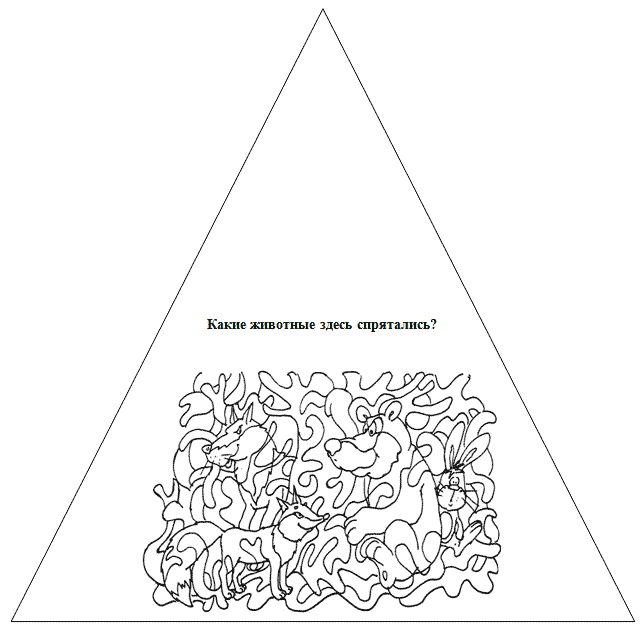
How to create mnemonic tables
Drawing up mnemonic tables involves performing the following manipulations:
- breaking the text into parts (focusing on the most important points);
- dividing a sheet of paper into squares (the number of squares depends on the highlighted parts of the story);
- depiction of each moment in the picture (both nouns and adjectives can be described);
- words that are difficult to sketch (verbs or questions) can be depicted as a “?” (the child must comment on them).
To facilitate the perception of fairy tales or riddles by young children, the works are broken down into individual situations, which are subsequently transferred to pictures for children.
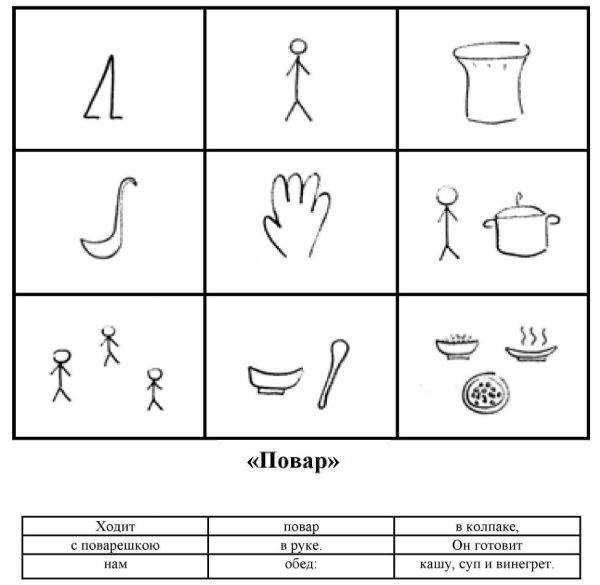
Features of use
When practicing in the form of a game with mnemonic tables, children are asked to:
- review speech therapy cards;
- remember what is described;
- talk about what you saw, focusing on the pictures.
When children use mnemonics and perform assigned tasks, they actively carry out the following processes:
- viewing diagrams and understanding what you see;
- transformation of visual data into figurative data, identification of what is seen with a concept;
- compiling a story based on drawings;
- memorizing fairy tales, stories, etc.
Older preschoolers can themselves take part in compiling mnemonic tables, focusing on the words of the teacher, who broke the story (fairy tale, riddle) into situations, explaining what needs to be drawn. The simplest and most interesting option is to depict a mnemonic table on the theme of the seasons (summer, winter, etc.) or based on fairy tales (best of all, your favorite ones).
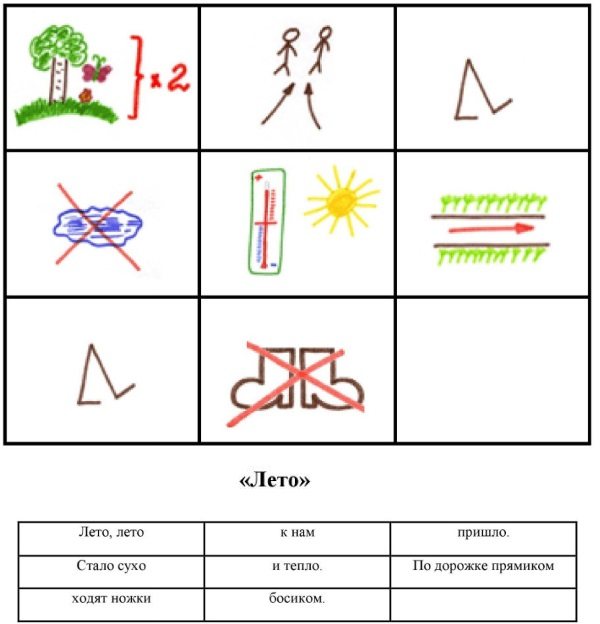
The development of children's coherent speech in older preschool age is also possible and necessary at home (at any time convenient for parents and the baby). This can help:
- joint reading of books with fairy tales, equipped with bright illustrations, reciting the main points and highlighting key characters and events;
- regular use of fiction as an effective means for increasing the level of development of coherent speech;
- a large book with tasks and exercises aimed at the active development of a child’s coherent speech (can be purchased in the children’s educational literature department of any bookstore);
- Doman cards;
- methodological recommendations for the development of coherent speech; other methods at the discretion of parents and the advice of teachers and speech therapists.
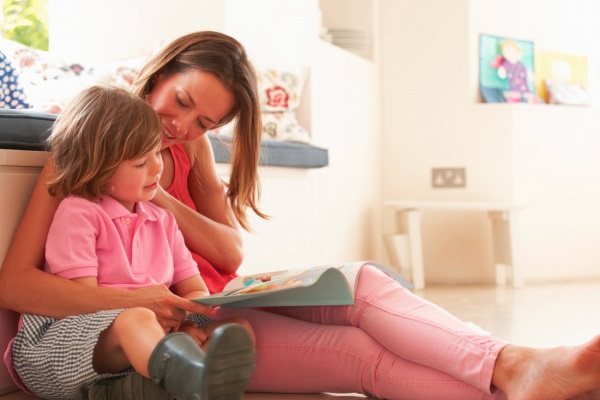
In the middle group “Storytelling based on a set of toys “Wild Animals” using mnemonic tables.
Program content: To train children in the ability to write a short, coherent story based on a toy. Develop mental processes: memory, imagination, attention, visual-effective thinking. Develop the ability to correlate iconic symbols with images of animals. Improve communication skills, the ability to conduct a dialogue. Cultivate a kind attitude towards animals, showing care for them. Accustom children to follow basic rules of behavior . Expand your vocabulary by naming the distinctive features of a wild animal, selecting definitions. Activate words and expressions in your speech that allow you to begin and end your story.
Preliminary work : examining plot pictures on the topic, drawing and discussing the meaning of symbols on mnemonic tables, reading poems, short stories, riddles about wild animals, viewing illustrations for books, atlases, postcards, albums, didactic games, dramatization games, sketches.
Material: mnemonic table, animal toys, dried leaves from various trees, light cape, sorceress mask, audio recording.
Progress: ( children stand in a circle.)
-I recently found out that there is a country of mysteries. I would really like to visit it, but I doubt that I can cope with the mysteries that I will encounter on my own. What should I do? Maybe you guys can suggest something. (lead the children to the goal , using leading questions) -I am very glad that you are going with me to the land of riddles, where there are many different animal toys that you can make friends with if you write a riddle about them. And this description diagram will help you write riddles. -You are already familiar with these symbols and signs. Let’s remember what they mean. (If the children know it well, then repetition is not necessary) (children sit on chairs)
-Animals live in the land of mysteries, only they are not real, but toy ones. (Drawing the children’s attention to the tabletop theater where the toys are hidden.) -I decided to make friends with one of them. If I tell a descriptive riddle with the help of a diagram, I can pick up this toy for play. (sample of a teacher. For example: This animal does not live at home, but lives in the forest. Its body is covered with thick short dark brown hair. It has 4 paws. It is not a predatory animal. It needs large teeth to gnaw branches and even tree trunks. He feeds his cubs with milk. Lives near the water and in the water.) - That's right. I described the beaver. Now it's your turn to make a guess. (several children if desired. I suggest playing the game “Name Which One”)
Bear (thick-footed, club-footed, shaggy, strong, huge, shaggy, clumsy, large, clumsy, powerful...)
Hare (light, nimble, agile, dexterous, fast, long-eared, oblique, cowardly, fluffy...)
Wolf (gloomy, predatory, angry, hungry, lonely, hardy..)
Squirrel (nimble, quick, elegant, graceful, fast, nimble, economical, thrifty, troublesome...)
Fox (fast, cunning, agile, thieving, beautiful, cunning.)
-In the land of mysteries, the animals decided to praise themselves. Let's help them with this (I distribute the rest of the toys to all the children) Tell us how the animals move. - The fox is sneaking….. (carefully)
-The bear wanders... (clumsily) -The wolf looks... (angrily) -The lynx attacks... (suddenly) -The squirrel jumps... (gracefully)
- The moose is walking... (majesticly) - The hedgehog is snorting... (noisily) - The hare is jumping... (quickly)
-Guys, you have toys in your hands. You know toys can be made from anything. Let’s play the game “Say the Word” For example: rubber toys.
- From paper, from glass, from wood, from sand, from ice, from snow, from cardboard, from iron, from metal, from plasticine, from plastic, from caramel, from porcelain, from clay (children finish the sentence they started in unison)
Fizminutka (music from the “Sounds of Nature” cycle sounds thunder)
-Once upon a time, thunder was heard in the kingdom of mysteries. A sorceress appeared. (children get up from their seats, one child, if desired, puts on a sorceress mask. All children crouch and hide from the sorceress under a white cape. When the thunder subsides, the children return to their seats and discover that instead of toys there are dry leaves in the clearing) -Look, guys, something happened. The evil sorceress bewitched all the animals. Turned them into dry leaves. Now won’t you play with them. Let’s help them speak. (children conduct a dialogue on behalf of the chosen animal .The teacher helps to conduct a dialogue) -It’s time for us to return from the land of mysteries. I don’t want to part with the animals, you have become friends with them. I think you are happy about this friendship (Reflection of the lesson)
Mnemonic tables for children with OHP
The concept of coherent speech and its significance for the development of a child with general speech underdevelopment (GSD) has a direct relationship with the logic of thinking and the ability to comprehend images seen or sounds heard, expressing this in sequential speech in which logical chains are present. The general level of development of coherent speech inherent in preschoolers with ODD depends on the ability to think through information and construct statements on a variety of topics.
Dialogical speech is displayed in the communication of several people, often accompanied by simple monosyllabic statements, asking specific questions and composing options for answers to the interlocutor’s questions, followed by reproduction of the selected answer. In this process, a special role is played by formulating and asking questions, constructing answers and reasoned defense of one’s opinion. Coherent monologue speech in preschoolers is characterized by expansion and concentration of thoughts on the main thing, without delving into details. In the process of reproducing one’s thoughts and choosing linguistic means, internal motives play a decisive role, since it is they that stimulate monologue speech.
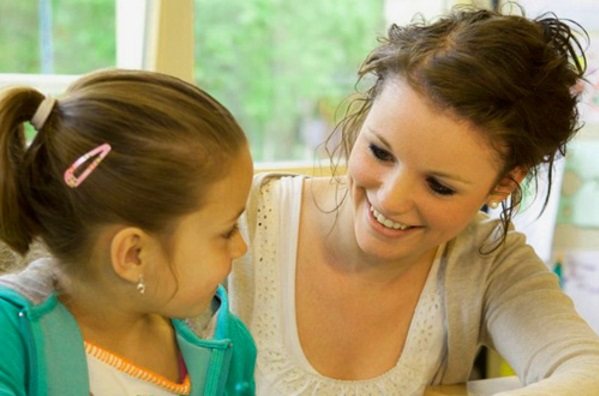
The features of the stages of development of coherent monologue and dialogic speech vary, but both types are closely interrelated. This nuance must be taken into account when conducting classes aimed at stimulating the development of coherent speech in children with ODD.
The introduction of mnemonics into speech development classes for preschool children should be carried out with the help of mnemonic squares, in which the simplest words are encrypted (boy, girl, sun). Only after children understand the concept of “encryption” can they move on to more difficult variants of schemes - mnemonic tracks with mnemonic tables, which can be based on a whole story.

Mnemonic track “Two funny geese”.
Using this technique during classes with children with special needs allows:
- increase attention and interest in games with logic cards;
- facilitate the perception and processing of information data that
- are stored in memory and can be played back if necessary.
Mnemonics. Reference pictures, mnemonic tables
The publications in this section contain many useful examples of using mnemonic tables and other visual teaching aids in everyday work with children.
Here everything is about how to use the capabilities of mnemonics in learning.
Contained in sections:
Includes sections:
Mnemonics as a means of developing speech, memory and thinking “Teach a child some unknown five words - he will suffer for a long time and in vain, but associate twenty such words with pictures , and he will learn them on the fly.” K.D. Ushinsky Mnemonics is the art of memorization, the history of which goes back more than 2000 years. Mnemonics is.
The use of mnemonics in working with preschool children Report “The use of mnemonics in working with preschool children” Educator: senior group No. 9 Zikhova M.R. g.p. Nartkala 2022 Report for educators on the topic: “Using mnemonics in working with preschool children” “Teach your child something.
Publication “Consultation “Mnemonics - an effective method for developing speech.” » Article » Mnemonics is an effective method for developing speech in preschoolers» What is mnemonics? “Teach a child some five words unknown to him, he will suffer for a long time and in vain, but associate twenty such words with pictures, and he will learn them on the fly.” Ushinsky K.D.
Final open lesson “Drafting a description of the appearance of a wild animal using a mnemonic table”
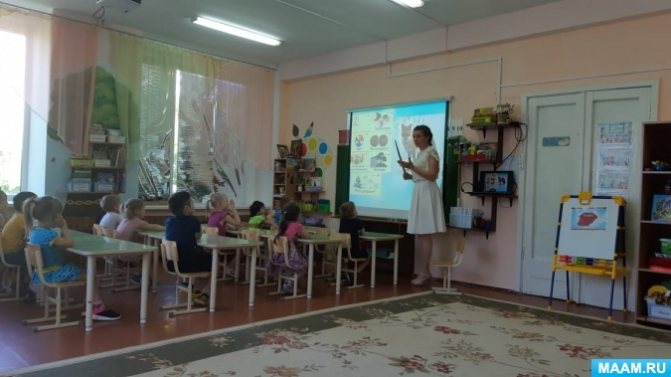
Topic: Drawing up a description of the appearance of a wild animal using a mnemonic table. Goal: • Continue to teach how to compose a descriptive story about a wild animal using a mnemonic table; develop the ability to carefully examine a picture and reason about its content. Objectives: Developmental: •.
GCD for speech development using mnemonics in the junior group “Compiling a descriptive story about a toy” “Compiling a descriptive story about a toy” Goal: Development of coherent speech in children by composing a descriptive story using a mnemonic track. Tasks: coherent speech: teach children to answer the teacher’s questions, describe the subject; compose using.
Master class for teachers “Mnemonics” Master class for teachers “Mnemonics as an actual technology in the implementation of the tasks of educational areas in preschool educational institutions” Senior teacher: Kucherova T.N. Purpose of the master class: To familiarize teachers with the educational technology of mnemonics, which ensures effective memorization.
The article “Summary of GCD for speech development” “Composing a story about birds according to. »
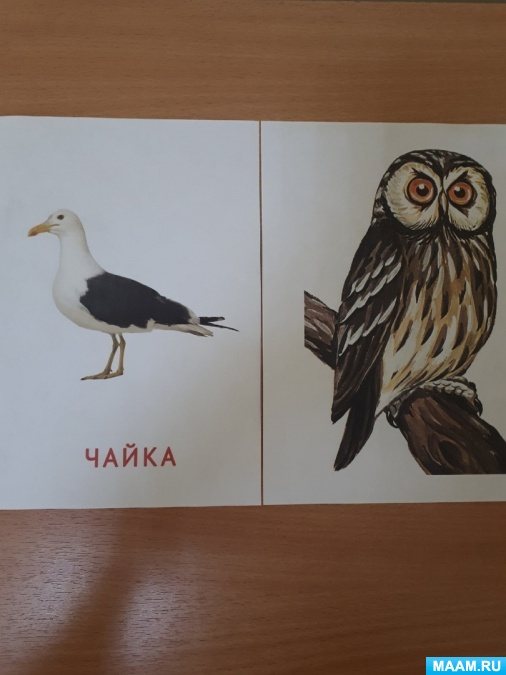
Abstract of the GCD for speech development “Composing a story about birds using a mnemonic table” Koneva Anastasia Irikovna Stages of activity - Motivational and incentive The teacher suggests solving a riddle: A worm dreams at night of a Miracle Yudo on a branch: A long beak and two wings... If it flies, it’s bad.
Summary of educational activities for speech development using mnemonics “Memorizing the poem “What is Victory Day?” Summary of direct educational activities on speech development in the preparatory group On the topic: “Memorizing the poem by A. Usachev “What is Victory Day?” with the help of mnemonics, mnemonic tables.” Goal: to develop children’s interest and need for memorization.
Source
Effectiveness of application
The introduction and use of mnemonic tables in the process of developing coherent speech in preschoolers of different ages is of significant importance, since in addition to significantly expanding their vocabulary, children can:
- increase knowledge about the environment;
- learning rhymes is fun and enjoyable, without really thinking about it;
- get used to retelling information heard on various topics, both in your own words and those that were heard.
The development of coherent speech in children of senior preschool age with the introduction of mnemonic techniques can show the first results quite quickly if they are interested, and the process itself does not cause a feeling of resistance. Favorite fairy tales and poems, taken as a basis when compiling mnemonic squares or mnemonic tracks, will make it clear to the child that retelling what he heard in his own words or composing new stories is not at all difficult, but on the contrary, interesting.
